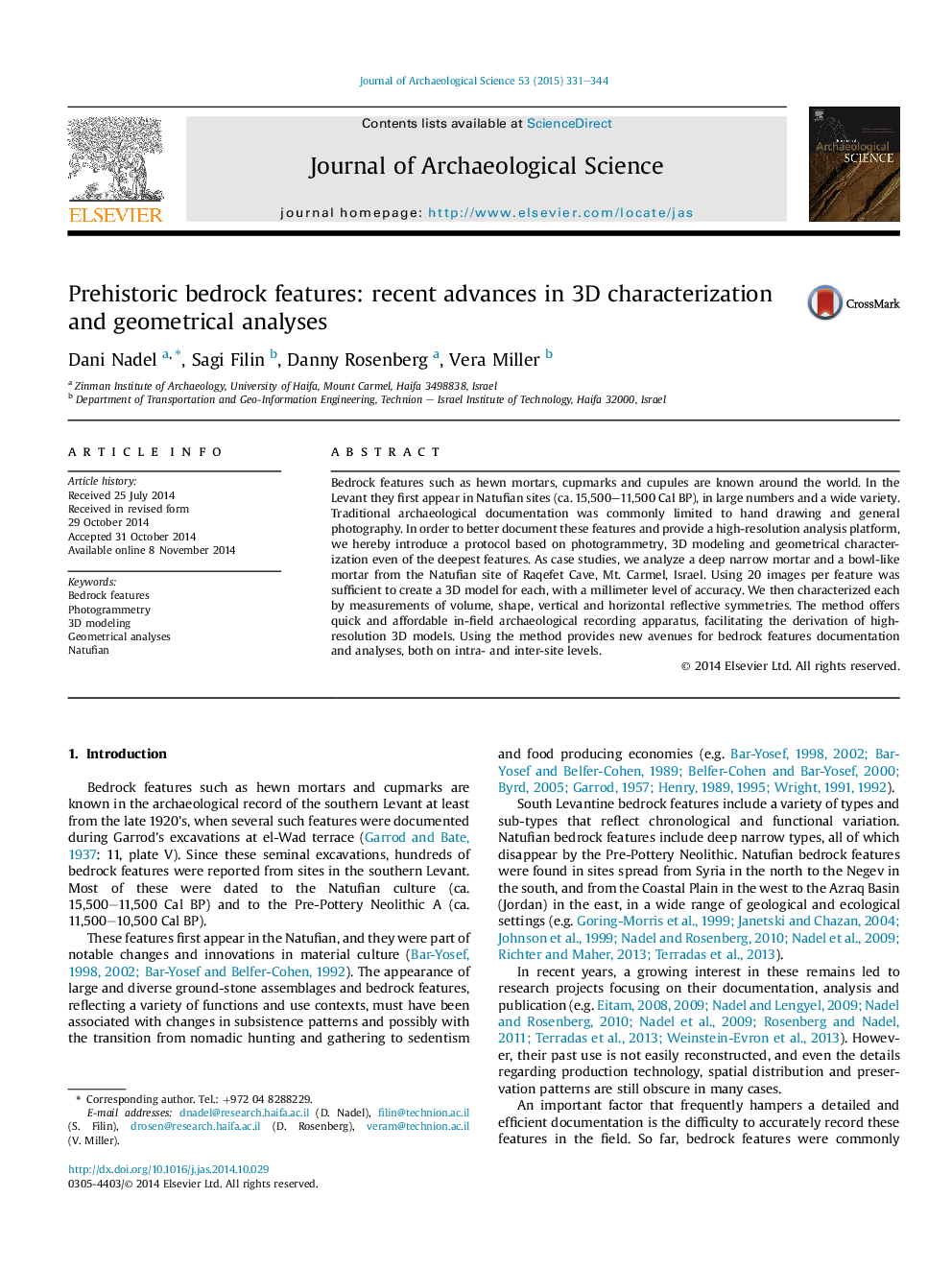| Article ID | Journal | Published Year | Pages | File Type |
|---|---|---|---|---|
| 7442582 | Journal of Archaeological Science | 2015 | 14 Pages |
Abstract
Bedrock features such as hewn mortars, cupmarks and cupules are known around the world. In the Levant they first appear in Natufian sites (ca. 15,500-11,500 Cal BP), in large numbers and a wide variety. Traditional archaeological documentation was commonly limited to hand drawing and general photography. In order to better document these features and provide a high-resolution analysis platform, we hereby introduce a protocol based on photogrammetry, 3D modeling and geometrical characterization even of the deepest features. As case studies, we analyze a deep narrow mortar and a bowl-like mortar from the Natufian site of Raqefet Cave, Mt. Carmel, Israel. Using 20 images per feature was sufficient to create a 3D model for each, with a millimeter level of accuracy. We then characterized each by measurements of volume, shape, vertical and horizontal reflective symmetries. The method offers quick and affordable in-field archaeological recording apparatus, facilitating the derivation of high-resolution 3D models. Using the method provides new avenues for bedrock features documentation and analyses, both on intra- and inter-site levels.
Keywords
Related Topics
Physical Sciences and Engineering
Materials Science
Materials Science (General)
Authors
Dani Nadel, Sagi Filin, Danny Rosenberg, Vera Miller,
